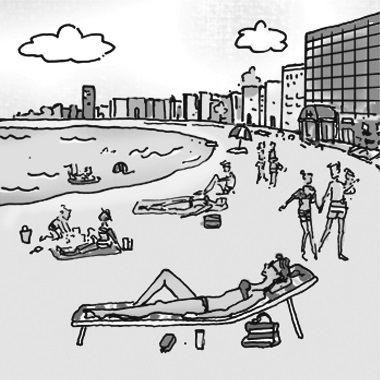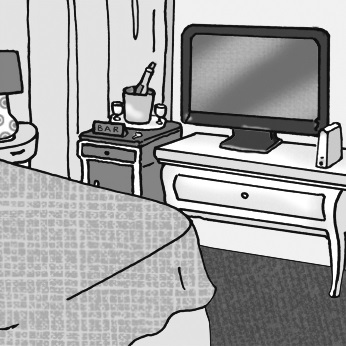Gli aggettivi possessivi. Durante il tour della sua casa, Antonio dice a Bruno di chi sono le cose. Scrivi la forma corretta dell’aggettivo possessivo.
le finestre di mamma e papà -- Sono _______________________finestre.
le loro
You might also like to view...
Choose the correct verb form in each sentence.
They (are / be) expecting all club members to participate in welcome week.
Complete the sentences according to the pictures.


Alain et sa famille descendront dans _____________________________________________.
Ils ont réservé une chambre avec _______________________________________________.
What will be an ideal response?
According to Dr. King, why is acquiescence to oppression immoral?
_____ a. because one will never win one’s freedom with acquiescence _____ b. because to accept an unjust system is to cooperate with it _____ c. because acquiescence is taken as proof of inferiority _____ d. because an oppressor does not respect acquiescence
The word or phrase that belongs in place of [B] is
Directions: Read the following passage and then answer questions 1–10. A poison is any substance that can harm the body, sometimes seriously enough to create a medical emergency. In the United States, there are more than a million reported cases of poisoning annually. Although some of these result from murder or suicide attempts, most are accidental and involve young children. These incidents usually involve 1 common substances such as medications, petroleum products, cosmetics, and pesticides. In fact, a surprisingly large percentage of chemicals in everyday use contain substances that are poisonous if misused. We usually think of a poison as some kind of liquid or solid chemical that has been ingested by the poisoning victim. Although this is often the case, many living organisms are capable of producing a toxin, a substance that is poisonous to humans. For example, 2 some mushrooms and other common plants can be poisonous if eaten. These include some varieties of house plants, including the rubber plant and certain parts of holiday plants such as mistletoe and holly berries. In addition, bacterial contaminants in food may produce toxins, some of which can cause deadly diseases (such as botulism). A great number of substances can be considered poisonous, with different people eacting differently to various poisons. As odd as it may seem, what may be a dangerous 3 poison for one person may have little effect on another. For most poisonous substances, the reaction is far more serious in the ill, the very young, and the elderly. Poisons can be classified into four types, according to how they enter the body: • Ingested poisons (poisons that are swallowed) can include many common household 4 and industrial chemicals, medications, improperly prepared or stored foods, plant materials, and agricultural products made specially to control weeds, pests, and crop diseases. • Inhaled poisons (poisons that are breathed in) take the form of gases, vapors, and sprays. Again, many of these substances are in common use in the home, industry, and agriculture. Such poisons include carbon monoxide (from car exhaust, wood- burning stoves, and furnaces), ammonia, chlorine, insect sprays, and the gases produced from volatile liquid chemicals. • Absorbed poisons (poisons taken into the body through unbroken skin) may or may not damage the skin. Many are corrosives or irritants that will injure the skin and then be slowly absorbed into body tissues and the bloodstream; others are absorbed into the bloodstream without injuring the skin. Examples of these poisons include insecticides, agricultural chemicals, plant materials, and certain forms of marine life. • Injected poisons (poisons inserted through the skin) enter the body through a means that penetrates the skin. The most common injected poisons include illicit drugs injected with a needle and venoms injected by snake fangs or insect stingers. a. Swallowed. b. Absorbed. c. Common chemicals. d. Toxins.